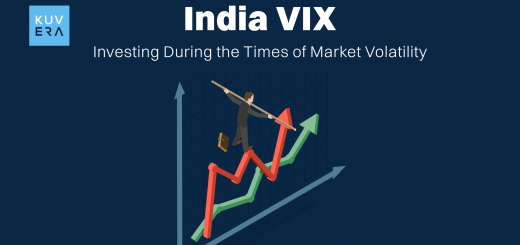What’s P/B ratio? Have you ever wondered how investors decide which stocks to buy or sell?
Well, one of the secret ingredients in their decision-making is the Price-to-Book ratio or the PB ratio—a financial metric that helps them assess whether a stock is overvalued or undervalued.
But before diving into the specifics of the PB ratio and its intricacies, let’s first explore what financial ratios are.
Apart from these ratios, there are many more aspects to look at while selecting stocks. Read here.
What Are Financial Ratios?
In the complex world of finance, financial ratios are like a secret code that unlocks a company’s true financial health. Just as a doctor uses various tests to gauge your health, investors and analysts use these ratios to diagnose a company’s strengths and weaknesses.
These ratios are tools that compare different financial metrics from a company’s balance sheet, income statement, and cash flow statement to provide a snapshot of its performance.
So, why are financial ratios so important?
Because they help answer critical questions, such as: Is this company profitable? Is it financially stable? Is it growing at a healthy rate? In essence, financial ratios are the key to making informed investment decisions.
Now, let’s zero in on one of the most popular financial ratios used by investors—the P/B ratio.
What Is the Price-to-Book Ratio?
The price-to-book ratio, compares a company’s market value to its book value. In simple terms, it shows how much investors are willing to pay for each rupee of a company’s net assets.
This ratio is particularly useful for evaluating companies with significant tangible assets, such as those in the manufacturing, banking, or real estate sectors.
Imagine you spot a vintage watch at a flea market. The seller tells you the watch is worth ₹1,000, but you’re only willing to pay ₹800. Here, the price you’re willing to pay (₹800) compared to the watch’s worth (₹1000) is akin to the P/B ratio.
If you buy the watch at ₹800, you’re essentially buying it at a discount—much like the value investors look for in the stock market.
The Formula: How Is the Profit-to-Book Ratio Calculated?
Calculating the P/B ratio is as easy as pie. Here’s the formula:
P/B Ratio = Market Price per Share / Book Value per Share
- Market Price per Share: This is the current trading price of the company’s stock.
- Book Value per Share: This is the value of the company’s net assets (assets minus liabilities) divided by the number of outstanding shares.
Alternatively, you can calculate the PB ratio using:
P/B ratio = Market Capitalisation / Book Value of Equity
Let’s understand this with an example:
Suppose you’re looking at Company X. The market price of its stock is ₹200, and its book value per share is ₹100.
P/B Ratio = ₹200 / ₹100 = 2
In this case, the P/B ratio is 2, meaning investors are willing to pay ₹2 for every ₹1 of the company’s net assets.
Start investing in Index Funds.
PB Ratio and Stock Market Analysis: How Is It Used?
The PB ratio is a handy tool for stock market analysis, especially when assessing the valuation of a company.
Here’s how it’s typically used:
- Value Investing: Investors use the P/B ratio to identify undervalued stocks. A P/B ratio below 1 suggests that the stock might be undervalued, meaning it could be a bargain. But a low P/B ratio could also signal that the company is in trouble, so it’s crucial to dig deeper.
- Comparative Analysis: The P/B ratio is also used to compare companies within the same industry. For instance, if Company A has a P/B ratio of 1.5 and Company B has a P/B ratio of 3, Company A might be considered a better value, assuming other factors are similar.
- Industry Norms: Different industries have different P/B ratio norms. For example, financial companies often have lower P/B ratios due to their asset-heavy nature, while tech companies might have higher P/B ratios because of their growth potential.
Although the P/B ratio is a versatile financial metric, its relevance varies significantly across different industries.
Explore different stocks and their financial profiles here.
Industries Where the PB Ratio Is Highly Relevant
1. Banking and Financial Services
Asset-heavy institutions like banks and financial institutions hold significant amounts of tangible assets like loans, real estate, and securities. The book value of a bank often closely reflects the value of its assets, making the P/B ratio a crucial indicator of whether the bank is undervalued or overvalued.
A low P/B ratio (often less than 1) in the banking industry might actually be a sign of a good investment, indicating that the market price is lower than the company’s book value. This can suggest that the bank’s stock is undervalued, presenting a potential buying opportunity.
2. Real Estate
Real estate companies and REITs (Real Estate Investment Trusts) hold large amounts of physical property, making their book value a key indicator of their intrinsic worth. Investors use the P/B ratio to assess whether these assets are fairly valued in the market.
Similar to banks, a low P/B ratio in real estate can be attractive if the company’s properties are undervalued or if there’s potential for asset appreciation. However, it’s important to consider factors like location, market trends, and property management.
Industries Where the PB Ratio Is Less Relevant
1. Technology
Tech companies often have minimal tangible assets compared to their intangible assets, such as intellectual property, patents, and brand value. These intangibles aren’t fully captured by the book value, making the P/B ratio less effective in assessing a tech company’s true value.
In the tech industry, a high P/B ratio is common and not necessarily a bad thing. It often reflects the market’s confidence in the company’s future growth, innovation potential, and profitability. Investors typically rely more on metrics like the P/E ratio or growth projections when evaluating tech stocks.
How Is the P/B Ratio Different from the P/E Ratio?
Now that we’ve got a good grasp on the P/B ratio, you might be wondering how it stacks up against the P/E ratio—another popular financial metric. While both ratios are used to assess a company’s value, they measure different things:
- P/B Ratio: Compares a company’s market value to its book value, focusing on the company’s assets.
- P/E Ratio: Compares a company’s market value to its earnings per share (EPS), focusing on the company’s profitability.
In simple terms, the P/B ratio is like evaluating the value of a house based on its construction cost (book value), while the P/E ratio is like evaluating the house based on the rent it can generate (earnings).
While there are numerous advantages and applications of P/B ratio as a financial metric for evaluation, it comes with its own limitations.
Limitations of Using the PB Ratio
1. Intangible Assets: The ratio doesn’t account for intangible assets like brand value or intellectual property, which can be significant for companies in industries like technology or pharmaceuticals.
2. Not Always Reliable: A low P/B ratio might indicate that a company is undervalued, but it could also be a sign of financial trouble.
3. Industry Differences: The P/B ratio varies widely across industries, so it’s important to compare companies within the same sector.
Explore our app now to add confidence to your investment styles.
Wrapping Up
The PB ratio is a powerful and versatile tool in the investor’s toolkit. It offers a straightforward way to assess whether a stock is overvalued or undervalued. By comparing a company’s market value to its book value, the PB ratio helps investors make informed decisions, especially when it comes to value investing.
However, like any financial ratio, it’s important to use it in conjunction with other metrics and to understand its limitations. So, the next time you’re evaluating a stock, remember to check its PB ratio—it might just be the key to unlocking a great investment opportunity.
Interested in how we think about the markets?
Read more: Zen And The Art Of Investing
Watch here: Investing In Passive Funds
Start investing through a platform that brings goal planning and investing to your fingertips. Visit kuvera.in to discover Direct Plans of Mutual Funds and Fixed Deposits and start investing today.
AREVUK Advisory Services Pvt Ltd | SEBI Registration No. INA200005166
DISCLAIMER: Mutual Fund investments are subject to market risks. Read all scheme related documents carefully. Registration granted by SEBI, membership of BASL (in case of IAs) and certification from NISM in no way guarantee performance of the intermediary or provide any assurance of returns to investors. Investments in securities market are subject to market risks. Read all the related documents carefully before investing. The securities quoted are for illustration only and are not recommendatory.












